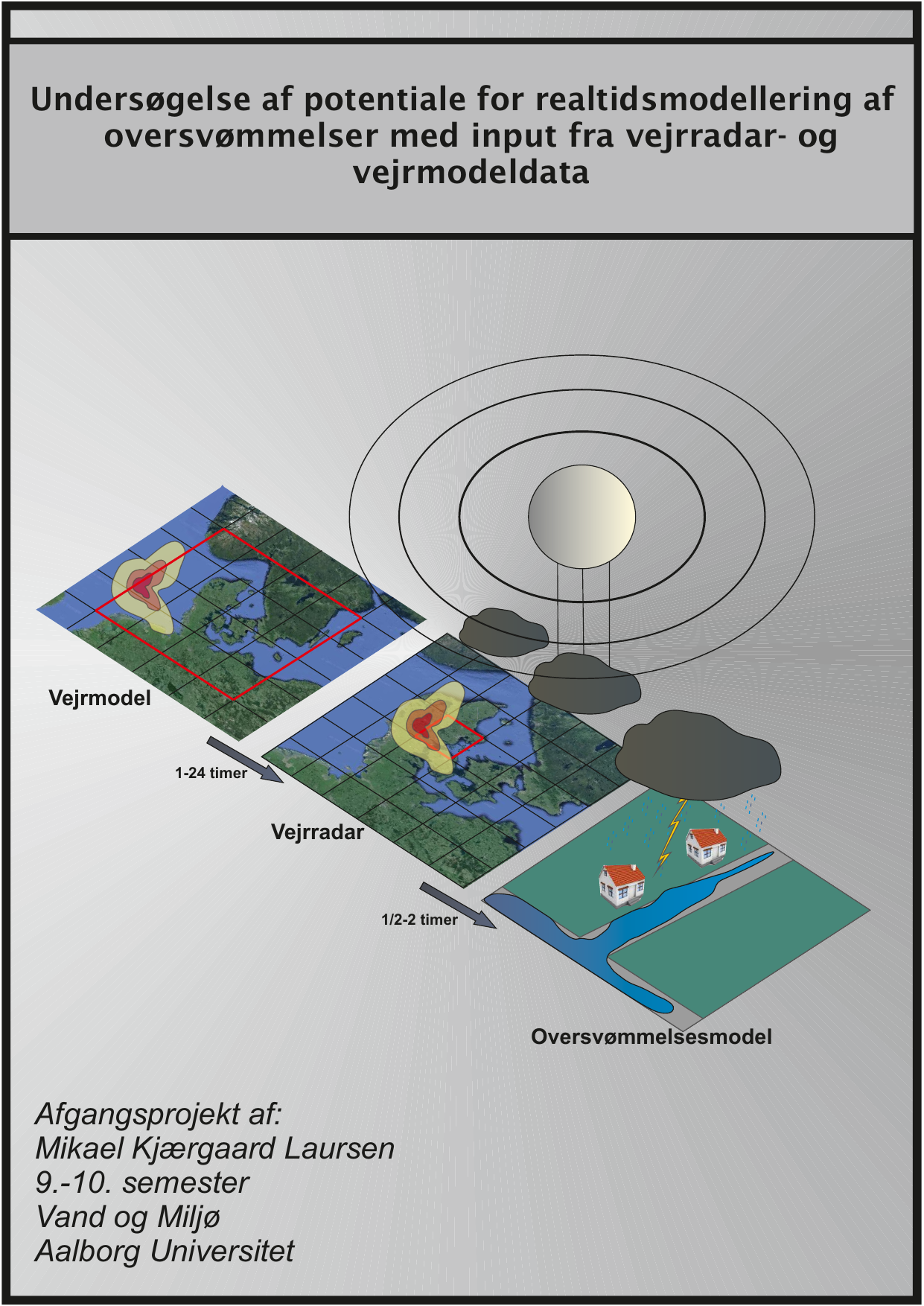
Undersøgelse af potentiale af realtidsmodellering af oversvømmelser med input fra vejrradar- og vejrmodeldata
Oversat titel
Forfatter
Semester
4. semester
Uddannelse
Udgivelsesår
2015
Afleveret
2015-06-09
Antal sider
113
Abstract
Recent years have seen several cases where heavy rainfall has caused major flooding in cities which has cost the community a lot of money in the form of damaged buildings and infrastructure. According to DMI’s climate forecast there will be a change in both the total annual precipitation and rain intensities in the individual events throughout this century. It is expected that in Denmark will occur more and longer dry periods without rain in the summer, but the rainfall events will be more intensive. In the winter there will be a general tendency of more precipitation. Based on this problem this project investigate whether it is possible to use some of the forecasting tools that are available today to predict urban flood caused by heavy rainfall. The study includes an investigation of two heavy rainfall events, which caused flooding in a small town, Lystrup, just north of Aarhus. The two cases took place respectively the 26. of August 2012 and the 13.-14. of July 2014. The two forecasting tools is based on different methods of estimating precipitation. The first method is a nowcast model which is based on extrapolation of radar data. This method is best applicable seen at a local scale and in leadtimes of 10-120 min. The second method is a numerical weather model. This is most easily applied on a larger scale and in leadtimes of 1-24 hours. Both forecasting tools showed a potential to forecast flooding of the two events. For both tools, there was some uncertainty about estimating the correct intensities and time during convective rainfall. The Nowcast model tended to underestimate the precipitation strongly, due to the convective rainfall that occurs in short periods of time, which limits the longer lead times considerably. The weather model could predict the convective rainfall, however, the uncertainty in estimating the exact location of it is relatively high. Overall, the analysis has shown a potential to do a flood prognosis, however, it is difficult to definitively make an assessment of the potential from the studied containing two heavy rainfall events. It is expected to be necessary to study more of the same type of events to give a final assessment of the potential.
Emneord
